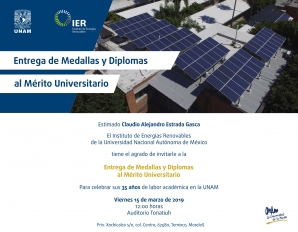D. Riveros-Rosas, J. Herrera-Vázquez, C. Pérez-Rábago, C.A. Arancibia-Bulnes, S. Vázquez-Montiel, M. Sánchez-González, F. Granados-Agustín, O. Jaramillo, Estrada C.A.
Abstract
Radiative heat transfer in a solar thermochemical reactor for the thermal reduction of cerium oxide is simulated with the Monte Carlo method. The directional characteristics and the power distribution of the concentrated solar radiation that enters the cavity is obtained by carrying out a Monte Carlo ray tracing of a paraboloidal concentrator. It is considered that the reactor contains a gas/particle suspension directly exposed to concentrated solar radiation. The suspension is treated as a non-isothermal, non-gray, absorbing, emitting, and anisotropically scattering medium. The transport coefficients of the particles are obtained from Mie-scattering theory by using the optical properties of cerium oxide. From the simulations, the aperture radius and the particle concentration were optimized to match the characteristics of the considered concentrator.
Optical design of a High Radiative Flux Solar Furnece for Mexico

